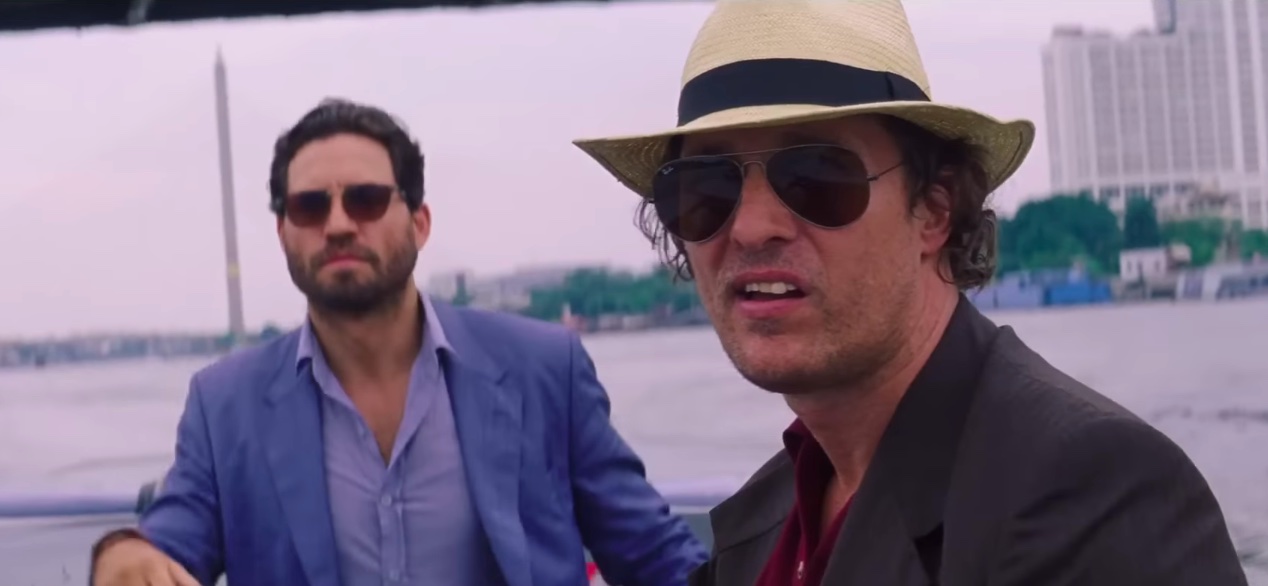In Stephen Gaghan’s ‘Gold,’ a business opportunity of a lifetime turns into the most disastrous decision for investors when a shocking truth about it comes to life. The story revolves around a man named Kenny Wells, who has a dream about gold mines in Indonesia. To save his struggling business from dying, he seeks out a geologist named Michael Acosta, who leads him into the heart of the jungle in Indonesia, claiming that this is where the gold lies. Through his company, Washoe Mining, Kenny pours the remaining of his money into the business, but soon, the tide turns, and he becomes a millionaire. But that is just the beginning of the story. When the truth about the mines comes to light, Washoe finds itself in the midst of a storm. The whole affair is made more interesting by the fact that it is based on a true story.
Washoe Mining is Inspired by a Real Gold Mining Company Embroiled in a Scam
‘Gold’ adapts the true story of David Walsh and the meteoric rise and fall of his company, Bre-X. The film, like every other character in the movie, changed the company’s name as well as shifted its location from Canada to America. In the movie, Kenny inherits the company from his father who inherited it from his father who started the company after hitting a mine he found. To him, it is a matter of family pride to keep Washoe running and restore it to its glory. Bre-X, on the other hand, was set up by Walsh in 1989 through which he tried to get into gold and diamond mining. However, things went downhill pretty soon, and by 1992, Walsh’s company, which had amassed hundreds of thousands of dollars in debt, was declared bankrupt.

Bre-X was revitalized when Walsh was approached by two geologists, John Felderhof and Michael de Guzman, to buy a mine in Borneo, Indonesia. Walsh had met Felderhof ten years before and had approached him to help find something new that could bring his company back on track. When the idea of owning a gold mine that could potentially be the biggest find in terms of gold was proposed to him, he jumped into it headfirst. He invested about eight thousand dollars in the venture and then went around to find other investors, which became much easier when it was claimed that the mine in Indonesia had about 200 million ounces of gold.
With the backing of the investors and the interest of the competing mining companies to get a share in it, the value of Bre-X surged astronomically. It went from a penny stock to having about $200 per share value in the market and soon became worth billions of dollars. Its success was so resounding that it even attracted the interest of the Indonesian government. It got its own stake in the company and eventually brought in another American company, Freeport-McMoRan. Freeport had a reputation in the mining business and the association with it gave more credence to Bre-X. However, the same also became the reason for its downfall.
Bre-X’s Downfall was as Swift as Its Rise
When Freeport started its procedure of due diligence, they found that the whole mine was a scam and the samples that served as the reason behind all the investments were tampered with and faked. Their discoveries soon spiraled Bre-X, and it lost its market value just as easily as it had earned it. By 1997, the company was under investigation and was declared bankrupt. Curiously, before it all broke down, Walsh, Felderhof and Guzman had sold a portion of their stakes and cashed out over a $100 million.
When the company fell, the investors lost billions of dollars, but at the end of the day, no one was held accountable for any of it. Walsh and Felderhof claimed that they had no idea about the lack of gold in the mines and dumped all the responsibility on Guzman, who had died by suicide before the company blew up. With Walsh’s death in 1998, the investigation took another hit. Over the years, efforts were made to bring the truth to light, but eventually, Felderhof was acquitted, and the remaining lawsuits against the company were dropped by 2014.
Read More: Gold: Is Kay Based on Kenny Wells’s Real Ex-Girlfriend?


